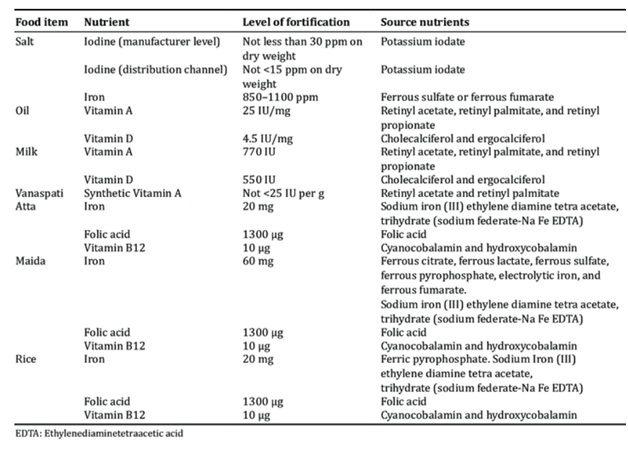Concerns over mandatory fortification of food items
In a pushback for the Centre’s plan to mandatorily fortify rice and edible oils with vitamins and minerals, a group of scientists and the activists have written to Food Safety and Standards Authority of India (FSSAI), warning of the adverse impacts on health and livelihoods.
Context
In a pushback for the Centre’s plan to mandatorily fortify rice and edible oils with vitamins and minerals, a group of scientists and the activists have written to Food Safety and Standards Authority of India (FSSAI), warning of the adverse impacts on health and livelihoods.
What are Fortified foods?
- These are those that have nutrients added to them that don’t naturally occur in the food.
- These foods are meant to improve nutrition and add health benefits.

- Fortification adds the key vitamins and minerals such as Iron, Iodine, Zinc, Vitamins A & D to the staple foods such as rice, wheat, oil, milk, and salt to improve their nutritional content.
Regulation of food fortification in India
- In October 2016, FSSAI operationalized Food Safety and Standards (Fortification of Foods) Regulations, 2016 to fortify staples, to reduce the high burden of micronutrient malnutrition, namely
- Wheat Flour and Rice (by Iron, Vitamin B12, and Folic Acid)
- Milk and Edible Oil (by Vitamins A and D)
- Double Fortified Salt (through Iodine and Iron)
- The ‘+F’ logo has been notified for the identification of fortified foods.
- Food Safety and Standards (Fortification of Foods) Regulations, 2018 and amended regulations were released to regulate fortification.
Need of fortification in India
- India has a very high burden of micronutrient deficiencies of Vitamin A, Iodine, Iron, and Folic Acid that leads to Night Blindness, Goitre, Anaemia and various birth defects. According to the National Family Health Survey (NFHS-4)
- 4 % of children (6-59 months) are anemic
- 1 %of women in the reproductive age group are anemic
- 7 % of children under 5 are underweight
Concerns regarding food fortification
- Mandatory fortification can lead to hypervitaminosis
- Nutrients don’t work in isolation but need each other for optimal absorption
- This will lead to monotonous cereal-based diets with low consumption of vegetables and animal protein
- To promote fortification FSSAI relies on food companies who would benefit from it, leading to conflicts of interest.
- Mandatory fortification would harm a vast informal economy of Indian farmers and instead benefit a small group of multinational corporations

